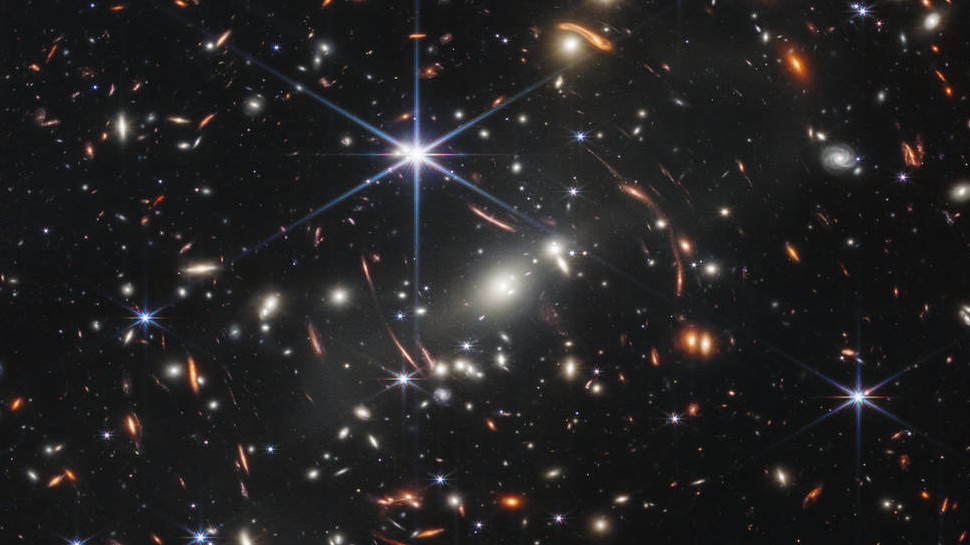Across the universe: How space photography is going to change our world
Space photography shows us what’s beyond our world

Ever since Neil Armstrong took his ‘small step for man’, the visual identity of space exploration has been powered by data.
Indeed, space’s accessibility has always revolved around the significance and distribution of space photography to the masses, inspiring future engineers and scientists the world over.
Techniques have evolved from pointing a camera out of a space shuttle window to encompassing mirrors and telescopes, thereby capturing subjects at enormous distances. But to share these accomplishments, space agencies have had to resolve multiple data and photographic challenges.
From the original Apollo 17 Blue Marble image (1972) to the first images produced of the Carina Nebula by the James Webb Space Telescope (2022), data and data storage has had a crucial role in facilitating these incredible findings and explorations.
More waves than the Pacific
Outer space is volatile and beautiful. It’s harsh and its weather unpredictable, so to capture its subject matter you need robust R&D, variable techniques and data solutions.
Large swathes of the universe – like our own galaxy, the Milky Way – are concealed by cosmic dust, which is impenetrable to visible light. But the discovery that radio waves pass right through cosmic dust has led to their current use in space photography.
UV photography uses ultraviolet radiation to create two-dimensional images of extragalactic stars and planets. And infrared (IR) cameras focus on electrons emitting radiation to capture photos beyond the visible light spectrum. By contrast, radio imaging constructs pictures by sending out radio waves into space which bounce off objects and return to satellite receivers. This data is compiled and creates pixel images of data to create a mosaic.
Sign up to the TechRadar Pro newsletter to get all the top news, opinion, features and guidance your business needs to succeed!
The required data to construct a single photograph with any one of these techniques is impressive. For example, this image of the center of the Milky Way, was caught by the MeerKAT Radio Telescope in South Africa. The panorama is itself a composition of 20 separate radio wave observations, which required three years of processing and 70 terabytes (TB) of radio wave imagery for that single image.
How much data?
70TB is a lot of data for one image. To put this into perspective, 1TB is enough storage for roughly 20 feature-length films.
Consuming this volume of data isn’t an irregularity. Current ongoing missions are generating these levels consistently, sometimes reaching up to 100TB a day. Furthermore, this data needs to be stored locally during space missions before being transmitted back to Earth for processing.
Data integrity and how to store it has become a unique challenge in outer space. Materials need to endure launch, orbit, and space radiation. The reliability of these materials is mission critical. These missions capture isolated incidents that humanity often has only one shot at seeing and demonstrates just how critical it is that this data returns to Earth in a usable form.

Trying to transfer this data to a centralized source for processing will potentially cause networks to collapse as single streams of data turn into a flood. This is where NAND flash comes in - a durable, non-volatile, and cost-effective solution. NAND flash is already enabling billions of devices and apps, and storing user data and operating systems here on Earth – maximizing bandwidth utilization and enabling real-time analysis.
Satellites need to withstand the forces of a rocket launch, leaving Earth’s atmosphere, space’s harsh temperatures and galactic cosmic rays. Once the collected data is stored securely, the various space missions wait to transmit the data back to Earth via radio waves. Mission control must monitor the volume and transmission rate to ensure the data’s integrity.
It’s a balancing act – as the data must not exceed the storage capacity of the satellite; whilst also preventing losses during the transmission phase.
To infinity and beyond…
Beyond the benefits for science and business in terms of data storage, space photography is crucial to communicate space missions. The power of imagery is that it's an inclusive medium, which isn’t hindered by technical jargon, complicated mathematics or even translation; it's a completely universal form.
Space photography shows us what’s beyond our world. A story punctuated by the tireless work of technicians, engineers and scientists the world over. Whilst demonstrating technical advances and feats, space photography is simultaneously inspiring the next generation to come.
These pictures can be the genesis for many careers in science – whether as an astrophysicist, ecologist or mathematicians. They may not land in space, but those people still land amongst the scientific stars.
- Check out our lists of the best rugged drives and best external hard drives